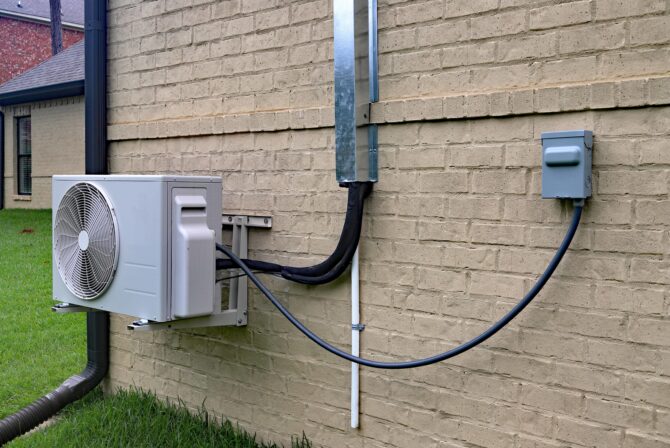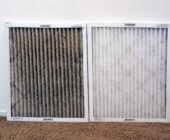
Whether you’re looking to modify a new home, or looking to improve an older one, the air conditioning system you choose is a big decision.
Central air conditioning systems are the most traditional in the United States, but with ductless mini-split units becoming more popular, figuring out which type is best for your home can be a daunting task. To make things easy for you, we at Champion AC & Plumbing have picked out the key features and main differences between the two in this quick and easy-to-follow guide.
What is Central Air Conditioning?
The most obvious feature of the central AC system is its duct system. Cool air is pumped through ducts hidden within walls, ceilings, and even flooring. The central AC system is then controlled by a thermostat which calls the unit to release cool air.
There are two main types of central ACs:
- Split central air conditioning – the most common design in the United States; condenser and compressor (two of the three main parts) are found in an outside unit; evaporator (last main part) is found inside a forced-air furnace
- Packaged central – all three parts mentioned above are inside one outdoor unit either on the ground or roof
Because ducts are laid throughout the entirety of a house, central ACs are considered best at evenly distributing cool air to every room.
They’re also virtually unseen, so they’re the least aesthetically intrusive.
They have a reputation for wasting a lot of energy, but the latest systems are more energy-efficient and add high value to homes. For this reason, most new homes are already built with central AC systems.
Adding central AC systems to a home without existing ductwork, however, requires a lot more work and can be very expensive. The initial cost is typically going to be less than ductless installation.
Central ACs also require annual maintenance and cleaning to make sure ducts aren’t leaky and perform efficiently. So while the initial expense is less, the long-term expenses compared to ductless can cost more.
What is Ductless Air Conditioning?
As the name suggests, ductless mini-split systems don’t require ductwork. Ductless systems are made up of an outdoor unit mounted on a wall and several small, compact units that are mounted on walls inside the main living areas of a house.
Ductless mini-split systems are made up of three main parts:
- Indoor unit – blower and evaporator that uses warm air from the room and releases cool air
- Outdoor unit – a condenser that all indoor units are connected to; releases heat from indoors to outdoors
- Conduit – connects the indoor and outdoor unit
Because ductless systems don’t use complicated ductwork, they’re great for older, more historic homes.
They’re flexible, too – the indoor units allow for different climates in each room for more controlled comfort.
Where ductless systems shine most, though, is in their energy efficiency. Mini-split systems require much less electricity than central AC systems. In fact, if you buy an Energy Star model, your cooling costs may lower by 30%. And since they’re made with such new technology, they’re also much less likely to need as many repairs as a central system down the line.
However, the upfront costs of mini-split units are actually 30% more expensive than central AC systems.
And while they do save more energy than central AC systems long-term, some people think their visibility affects the look of a room so much that they’re not worth the initial cost.
Can I do a Hybrid HVAC Set Up?
If you’re still unsure of which system to go for, why not consider both?
Central systems and ductless systems can be combined.
If your home already has an existing HVAC system but you’re looking to build additional rooms, mini-ducts are a faster, easier option than cutting a hole in your wall and building another duct. They are also great for trouble spots that you notice are always cooler/warmer than others — installing a single-zone mini-duct would only require a small opening to connect to the outdoor unit.
Getting Started with Air Conditioning Installation
With Champion AC & Plumbing, it’s easy to get started on the path to air conditioning installation or replacement. Our experienced techs can help you identify the right systems for your home and efficiency needs. Contact us to get started with a consultation.



